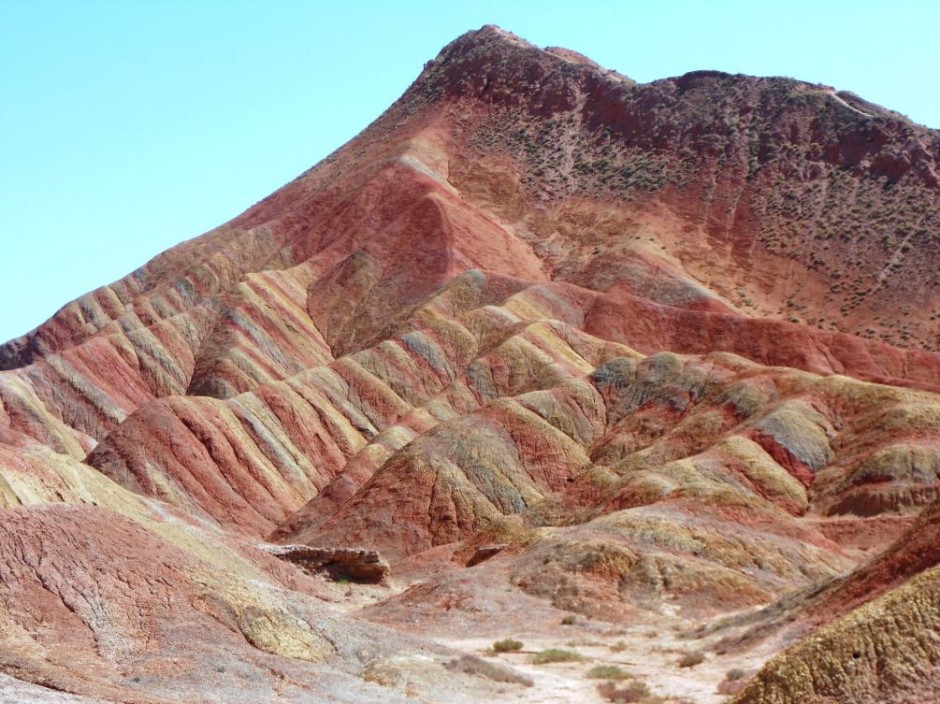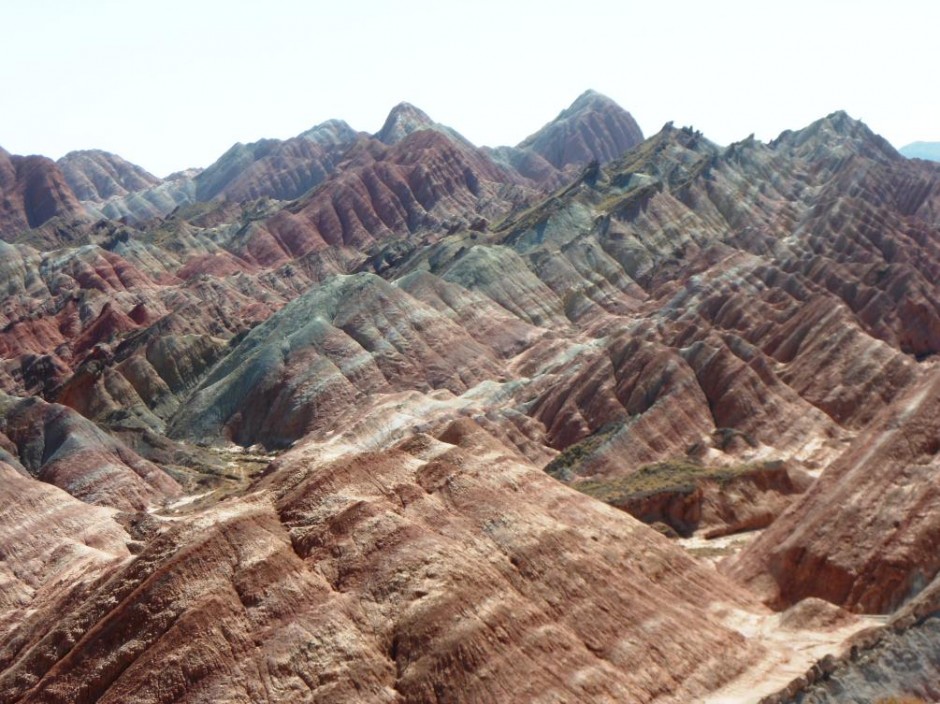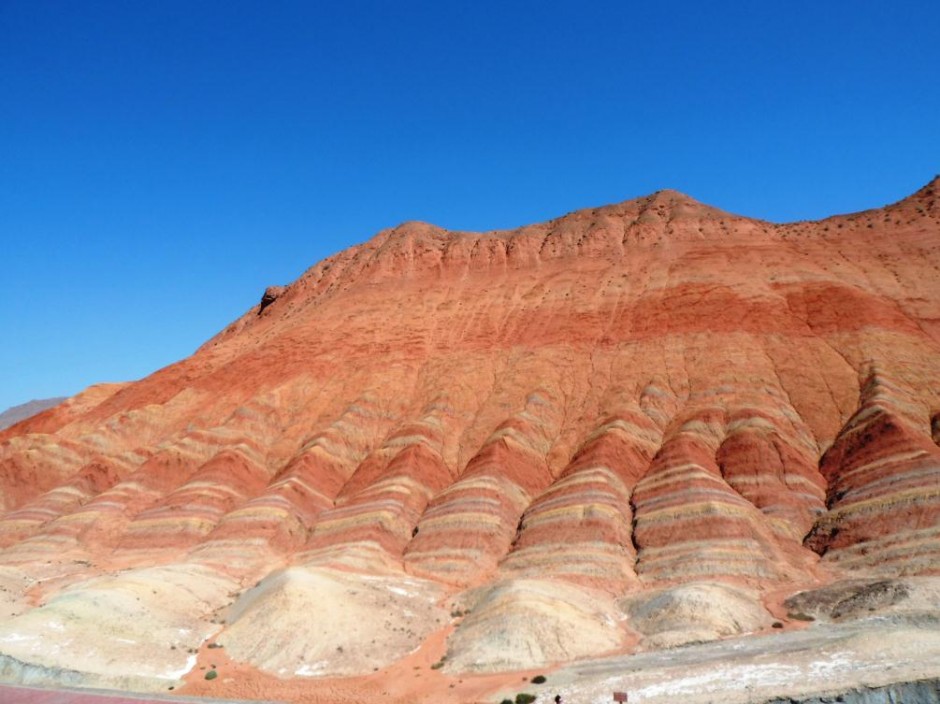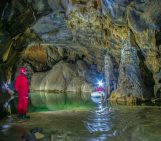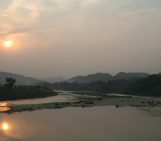In September 2012 I travelled to the Gansu Province of China to take part in the First International Symposium for New Techniques for Geohazards Research and Management. Over the past couple of weeks, I’ve been highlighting a number of issues, lessons and experiences from this trip. You can read the short archive of this series here. Future posts will examine areas relating to geohazards, disaster risk reduction and science communication – however today we touch on the important issue of geotourism.
The area of China that I visited last month had some of the most remarkable landscapes and scenery that I have personally witnessed. The combination of staggering mountains, vast desert and unusual rock formations leads to multiple opportunities to develop geotourism.
The Danxi-type rock formation is one such unusual formation. It’s vivid colouring and striped nature (a result of differing dominant minerals), dipping beds (caused by tectonic movement in the broader Himalyan regime) and striking erosional features (a result of both water and wind erosion) have resulted in a unique and truly beautiful sight. The Zhangye exposure of this formation is ranked one of the best in China. It is the only exposure of the formation that I have visited, but I was genuinely mesmerised by it and would love to see any better exposure.
Geotourism offers many important opportunities for communities, including: (1) Opportunities to promote and practice conservation, and protect important landscapes for future generations to enjoy. (2) Opportunities to develop geoscience education and communication, helping local communities and both national and international tourists understand the processes that shape our Earth, and finally. (3) An opportunity to develop local economies and provide employment. I was curious to see how the Chinese authorities organised their geotourism, in particular the level of conservation and education that was taking place.
In terms of conservation, I’d definitely rate the Zhangye Danxi as a good example. From small eco-buses taking people around a network of roads and good stopping places, to a well designed network of paths – the implemented measures prevented significant human erosion of the landscapes and multiple cars, coaches and motorbikes travelling around the area. There was little sign of any human activity on the main landscape and very little rubbish or waste spoiling the landscape. People visit these areas to get the best views, the best photographs and enjoy the landscape. Building strategic pathways on the landscape that offer you the chance to stand in places to get these ultimate views and photographs is a very clever way to prevent people wandering off the paths and onto the landscape. The paths had all been treated with appropriate colours so as to blend in to the natural environment and be fairly camouflaged.
In terms of education, unfortunately my Mandarin is not good enough to assess what was being told to those visiting the site. During each short leg of the minibus journey, the guide outlined some information about the site – but this was entirely, and in many ways understandable, aimed at Chinese national tourists. There was a definite absence of printed information (leaflets, guides and information boards) – which are commonly found in many western tourist areas, which was disappointing.
Finally, economic development – Geotourism offers significant opportunity to develop a sustainable, environmentally friendly way of creating jobs for the local population. From guides, office managers, shop-keepers and catering and transport – there are multiple opportunities for employment. The chinese seemed to have latched on to this, and there certainly seemed to be many people earning a living in one way or another from the Zhangye Danxi. Perhaps one area of concern would be the sustainability of some of the souvenirs – notably things such as corals – that were on sale not at this site, but at others and local markets.
Geotourism offers developing communities an exciting and dynamic way to promote education, conservation and sustainable development. As observed at the Zhangye Danxi formation, this can be done well (if not perfectly), protecting some valuable and unique landscapes.

